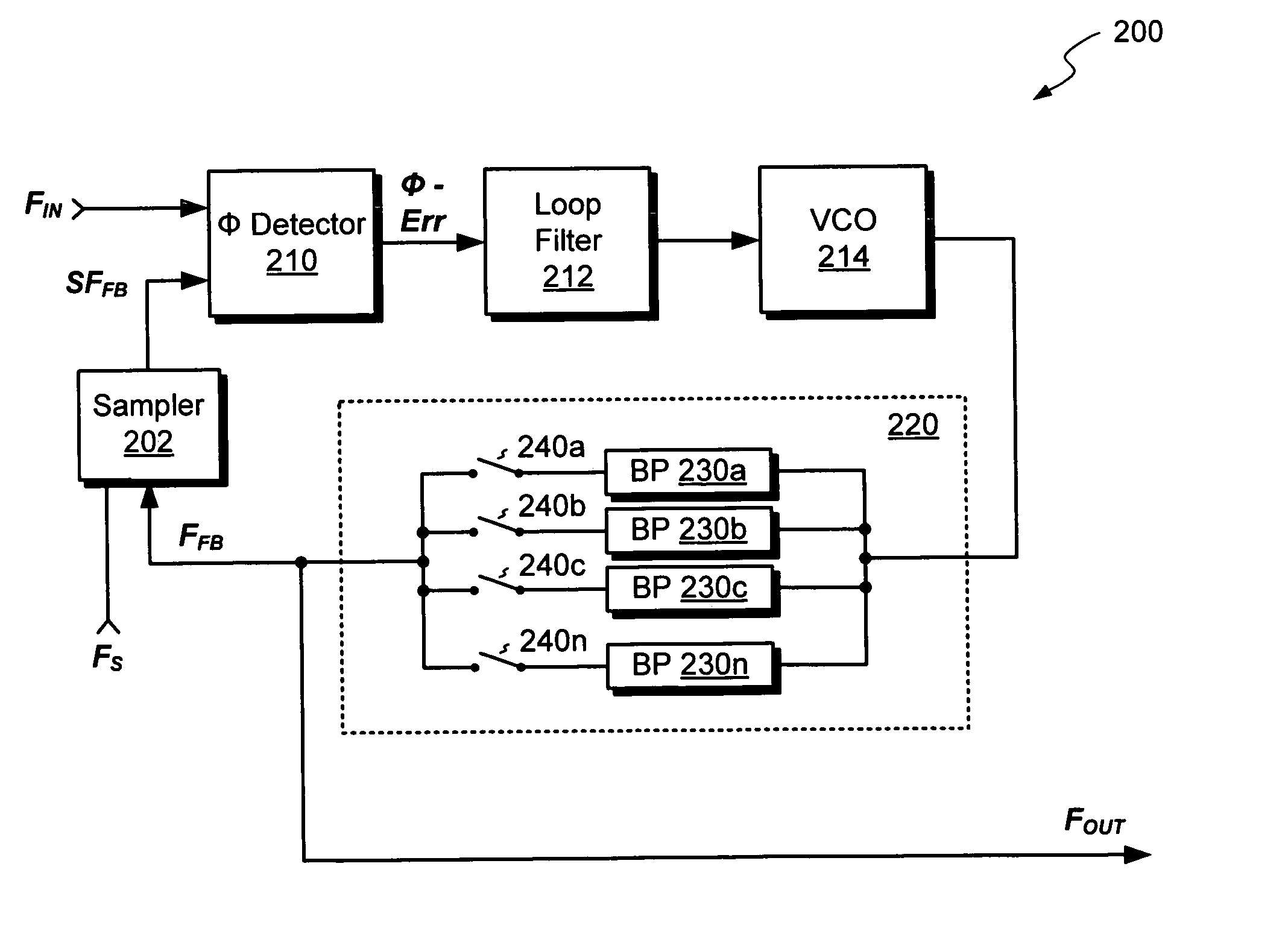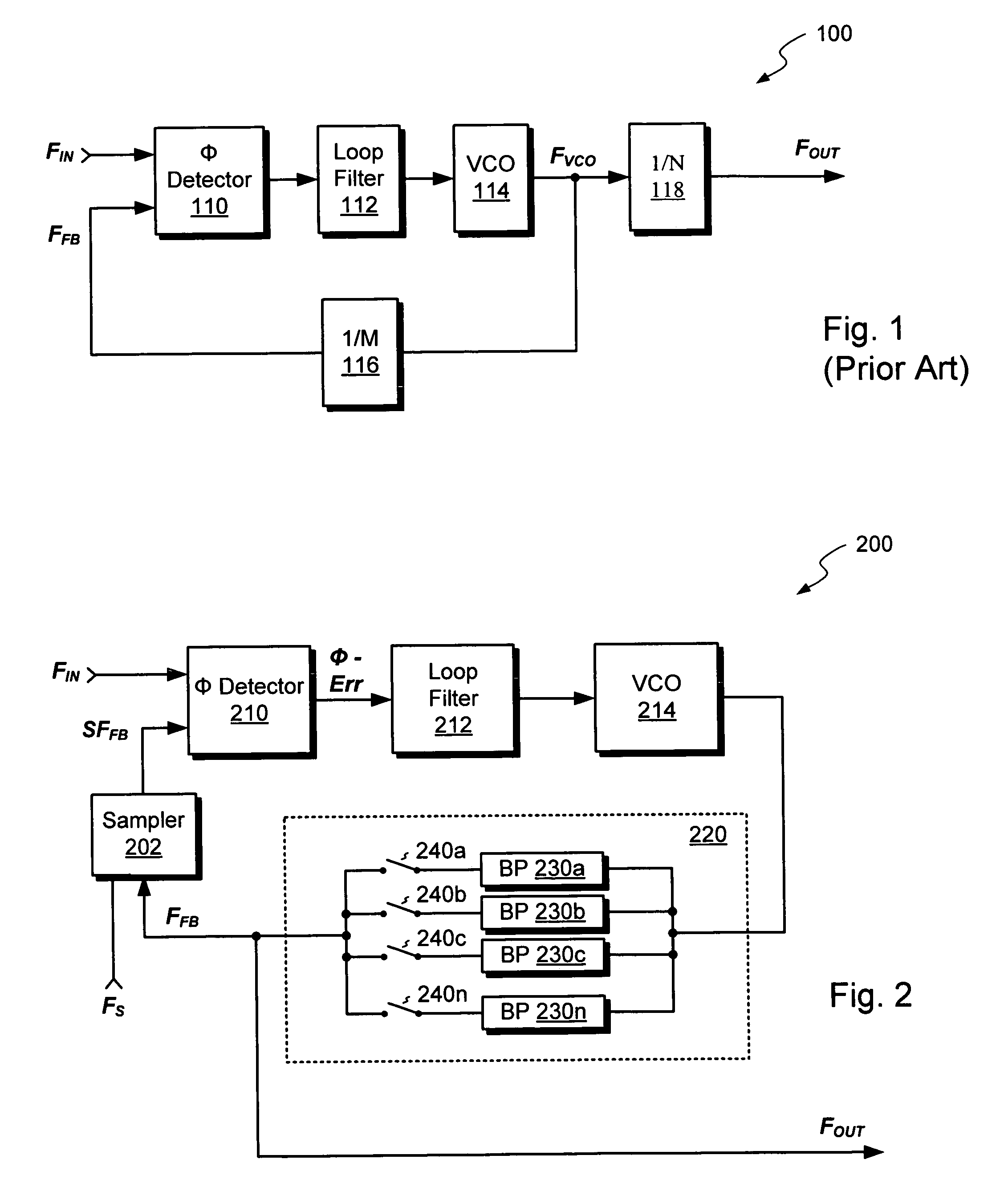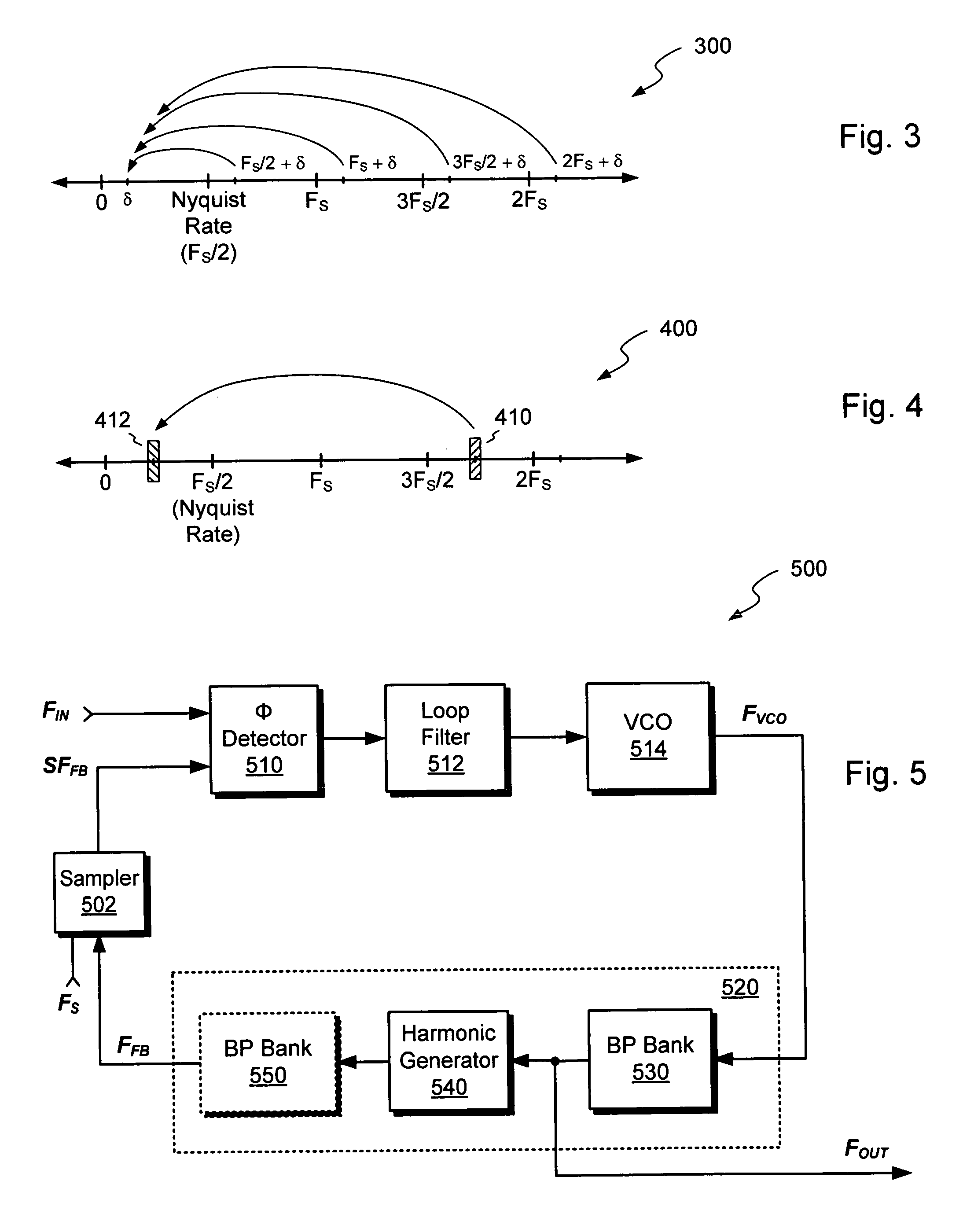Phase locking on aliased frequencies
a phase locking and aliasing technology, applied in the direction of oscillator generators, pulse automatic control, electrical equipment, etc., can solve the problems of limiting the usefulness of many ate applications, reducing the open-loop gain, and increasing the error rate of loop tracking errors
- Summary
- Abstract
- Description
- Claims
- Application Information
AI Technical Summary
Benefits of technology
Problems solved by technology
Method used
Image
Examples
Embodiment Construction
[0027]FIG. 2 shows an illustrative embodiment of a phase-locking circuit 200. The phase-locking circuit 200 receives an input signal, FIN, and produces an output signal, FOUT. The circuit 200 includes a sampler 202, a phase detector 210, a loop filter 212, and a controllable oscillator, such as a VCO (voltage-controlled oscillator) 214. The sampler 202 receives a feedback signal, FFB, at its input and provides a sampled feedback signal, SFFB, at its output. The phase detector 210 has 2 inputs and an output. The first input receives the input signal FIN, and the second input receives the sampled feedback signal, SFFB. The loop filter 212 and the VCO 214 each have an input and an output.
[0028]The circuit 200 also includes a circuit path 220, coupled from the output of the VCO 214 to the input of the sampler 202, for providing the feedback signal, FFB. Bandpass filters 230a-230n are preferably provided in the circuit path 220. These bandpass filters are preferably individually selectab...
PUM
 Login to View More
Login to View More Abstract
Description
Claims
Application Information
 Login to View More
Login to View More - R&D
- Intellectual Property
- Life Sciences
- Materials
- Tech Scout
- Unparalleled Data Quality
- Higher Quality Content
- 60% Fewer Hallucinations
Browse by: Latest US Patents, China's latest patents, Technical Efficacy Thesaurus, Application Domain, Technology Topic, Popular Technical Reports.
© 2025 PatSnap. All rights reserved.Legal|Privacy policy|Modern Slavery Act Transparency Statement|Sitemap|About US| Contact US: help@patsnap.com



